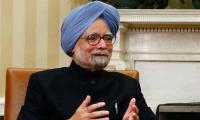OTTAWA: The Canadian economy added fewer jobs than expected in October and the jobless rate rose to a 21-month high of 5.7 percent, data showed on Friday, further evidence the economy has stalled and that the central bank may not need to raise rates again.
Canada added a net 17,500 jobs in October, Statistics Canada data showed. Analysts polled by Reuters had forecast a net gain of 22,500 jobs and for the unemployment rate to tick up to 5.6 percent from 5.5 percent in September.
The average hourly wage for permanent employees - a figure closely watched by the central bank - rose 5.0 percent from a year earlier, down from the 5.3 percent in September.
"In line with the more pronounced cooling in hiring, the annual pace of wage growth for permanent employees slowed three ticks to 5.0 percent," said Royce Mendes, head of macro strategy at Desjardins.
"While that's still inconsistent with the Bank of Canada’s 2 percent inflation target, monetary policymakers will take the deceleration as a sign that their medicine is working," he said.
The Bank of Canada (BoC) held rates at a 22-year-high of 5.0 percent last month after having raised them 10 times between March of last year and July to try to bring inflation back to its 2 percent target. Annual inflation was 3.8 percent in September.
The softer-than-anticipated jobs report follows data out earlier this week indicating that the economy likely slipped into a shallow recession in the third quarter.
Separately on Friday, data from S&P Global showed contraction in Canada's service sector deepened in October as inflation and higher borrowing costs weighed on new business activity.
The data "showed that the nation's vast services economy, the key contributor to overall economic output in Canada, remained mired in contraction territory during October," Paul Smith, economics director at S&P Global Market Intelligence, said in a statement.
Money markets see only the slimmest of chances for a rate hike in December, and are pricing in a 25-basis-point cut for June. The Canadian dollar was trading 0.4 percent higher at 1.3690 to the greenback, or 73.05 U.S. cents.
"The underlying picture for Canada's labor market is softening," said Doug Porter, chief economist at BMO Capital Markets. "This will keep the Bank of Canada pinned more fully to the sidelines, although we still believe that rate relief remains a distant prospect."
The BoC said last month that strong wage growth was among factors keeping underlying inflationary pressures higher than expected. The BoC has projected that inflation will return to its 2% target by end-2025, but cited labor market tightness among upside risks to achieving that goal.
The unemployment rate has risen four times in the past six months, and is now at the highest level since 6.5% in January 2022. With October's job gains, the economy is averaging 28,000 monthly employment growth this year, down from 30,000 a month earlier. Gains last month were in part-time jobs, which offset a small decline in full-time positions.
Employment in the goods sector increased by a net 7,500 positions, led by construction jobs. The services sector gained 10,000 jobs, led by information, culture and recreation as well as healthcare and social assistance.
A representational image of the expo centre. —Facebook@PakistanExpoCentres/FileLAHORE: The Trade Development...
People wearing Omega watches can be seen. —Facebook@SonrajOfficial/FileKARACHI: Sonraj, a leading name in the...
Samsung logo can be seen. — Reuters/FileKARACHI: Sapphire Electronics Limited, a subsidiary of Reliance Cotton...
Image showing a view of Doha Forum. — X@DohaForum/FileThe Doha Forum, held from December 7-8, 2024, once again...
Electric power generating wind turbines and solar panels can be seen. — AFP/FileLAHORE: Global efforts to bolster...
A model of the natural gas pipeline is placed on Russian Rouble banknote and a flag in this illustration taken, March...







